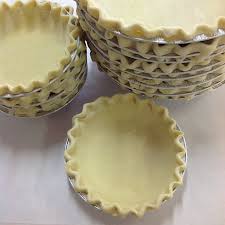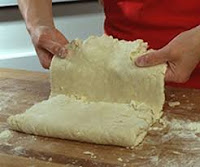Sugar not only sweetens food, it adds flavor, texture, decoration and it helps food to brown easier through caramelization process. It works to make baked goods more appealing in color, more moist and tender in texture, and it works to stabilize egg white meringues when making pavlovas and the like.
Sugar can be categorized by color and granularity.
White Sugar
-
Confectioners Sugar, Icing Sugar or Powdered Sugar
It is also referred to as xxx to 10x sugar (more X's indicating finer grains), and the sugar is ground further into a fine powder that can come in different degrees of fineness. Confectioners sugar dissolves immediately in liquid, and is often used to make icing and frosting for baked goods. Because powdered sugar clumps up easily, there is always a small amount of cornstarch added as an anti-caking agent. If the recipe calls for pure powdered sugar, such as for French macarons, you can use pure granulated sugar and grind it finer in a coffee grinder, or crush it in a mortar and pestle by hand. - Snow Sugar or Doughnut Sugar
This is similar to powdered sugar, only it doesn't melt as easily as it consists of dextrose, starch and anti-binding agents to retain its structure when dusted on pastries that require refrigeration. Commercial bakers use this on cakes, doughnuts and other pastries for decorative purposes. - Caster Sugar
Caster sugar is finer granulated white sugar. Because the crystals are finer, they dissolve quicker than regular granulated sugar, which makes it ideal for making meringues, syrups, and cocktails. - Granulated Sugar
It's also called refined, table, or white sugar. When people talk about "sugar," this is usually what is referred to. It's the most common type of sugar for daily all purpose use. It is made from sugar cane or sugar beets (99.95% Sucrose). - Pearl Sugar, Nib Sugar, or Hail Sugar
Pearl sugar is a opaque-colored specialty sugar that comes in different sizes by brand, often used in Scandinavia and a few other countries in Northern Europe. It is not completely round, but comes in large chunks and has a coarse, hard texture. Because it is heavily compacted, it holds its shape, and doesn't melt when exposed to moisture or high heat. Pearl sugar is commonly used to decorate pastries, cookies, and buns. Sprinkling it over the top of a bread or pastry or mixing it into the dough will give the baking goods extra crunch, sweet bursts and a nicer finishing aesthetic appeal. - Cubed Sugar or Sugar Cubes
Sugar cubes are compressed blocks of sugar that are designed to dissolve easily in hot liquid. The individual grains of sugar are not held tightly together.
Multi-Color Sugar
- Sanding Sugar
It is used mainly for decorating with its colorfulness and large crystals, which are resistant to heat. The crystals add crunchiness to the texture. Sanding sugar can be found in different colors for decoration.
Brown Sugar
Raw brown sugars range in the amount of processing they receive, but they are brown because, unlike white sugar, they have not had all of the molasses chemically and physically removed, except the "light brown sugar" and "dark brown sugar", which are made of refined sugar with a little molasses added back. The least processed of the brown sugars—Rapadura or panela—often still has the minerals and enzymes intact.
- Cane Sugar
Cane sugar is produced solely from sugarcane and is minimally processed. It has a larger grain, golden brown color, and it is usually more expensive than regular white sugar. Use the same amount as you would granulated sugar when you substitute it. - Turbinado Sugar
Turbinado Sugar is a minimally processed raw cane sugar that's been steam-cleaned with a light molasses flavoring. This sugar variety has non-uniform, medium-size, light-brown crystals. Though its color is similar to standard brown sugar, it's not the same thing. Turbinado sugar has a delicate caramel flavor and can substitute for granulated sugar in recipes if the color is not going to be an issue. Use the same amount you would granulated sugar. - Light Brown Sugar
Light brown sugar is refined white sugar with a little molasses added in. It has a slightly sticky, wet, sandy texture and a delicate caramel flavor. It adds color and more flavor for dishes and baked goods. Use the same amount when substitute it for granulated sugar in recipes. To substitute for light brown sugar with dark brown sugar, mix 2 parts of dark brown sugar and 1 part of white granulated sugar. Or use one cup granulated sugar with 1 tablespoon of molasses to substitute one cup light brown sugar. - Dark Brown Sugar
Like its lighter counterpart, dark brown sugar is refined white sugar with molasses added in. It contains more molasses than light brown sugar, resulting in a stronger, more intense flavor. Light and dark brown sugar can be used interchangeably. You can substitute brown sugar with granulated with a little molasses. Use one cup granulated sugar with 2 tablespoons of molasses to substitute one cup dark brown sugar. - Demerara Sugar or Demerera Sugar
Demerara sugar is a variety of raw cane sugar that is partially refined and is originally from Guyana. It is very close to Turbinado Sugar, but with a larger, coarser grain and uniform crystals. Like Turbinado sugar, it has a golden brown color and a natural molasses flavor. Use it for coffee or tea, or as a topping on baked goods to add complex and round sweet flavor. - Muscovado Sugar or Barbados Sugar
Muscovado sugar is a British specialty unrefined brown cane sugar and is very dark brown with a particularly strong molasses flavor. The minimally processed crystals are slightly coarser and stickier in texture than “regular” brown sugar. It has a much stronger and distinct flavor that is wonderful in barbecue sauce, marinades, and savory dishes.
Sugar You May Not Know
- Chinese Rock Sugar (冰糖)or Lump Sugar
Chinese Rock Sugar is made by cooking the refined sugar until it starts to color. It is then cooled and solidified as an opaque, gold-colored sugar lumps. Traditionally it comes in irregular lumps of crystallized sugar of varying sizes that you have to whack before using. The crystals can be up to 2 1/2 cm (1 inch) wide. These days you can find it in different degrees of fineness and very easy to use. It has a clear taste, with no discernible caramel tones. It is rounder and not as in-your-face sweet as regular white granulated sugar. Because it's less sweet, it doesn't overwhelm the flavour of tea or dishes as much as white sugar can. - Coconut Sugar
It's the same as palm sugar. - Jaggery Sugar or Java sugar
It's a variety of palm sugar. Jaggery is a traditional non-centrifugal cane sugar consumed in Asia, India and Africa. It is a concentrated product of date, cane juice, or palm sap (see palm sugar) without separation of the molasses and crystals, and can vary from golden brown to dark brown in color. It contains up to 50% sucrose, up to 20% invert sugars, and up to 20% moisture, with the remainder made up of other insoluble matter, such as wood ash, proteins, and bagasse fibers. Jaggery is mixed with other ingredients, such as peanuts, condensed milk, coconut, and white sugar, to produce several locally marketed and consumed delicacies. -
Kurozato (Sugar and Kuromitsu (黒砂糖)Syrup黒蜜)
It is typically made from unrefined Okinawan kurozatō ("black sugar"), and is a central ingredient in many sweet Chinese or Japanese dishes. Chinese and Japanese black sugar is very close to Muscodavo sugar with minimal processing and most minerals intact, which is believed to have health benefits. It is one of the ingredients commonly used in Asian desserts and pastries. For example it is used in making steamed cakes, muffins, wagashi, and it serves well with kuzumochi, fruits, ice cream, pancakes, sweet tonic soups, etc. - Maltose or Malt Sugar
More prosaically, it is a sugar made from grains by malting them. The grains might include barley, rice or wheat. It can come as a thick, sticky clear or amber color syrup sold in tins or tubs, or as a white or off-white crystalline powder with no odor to it. It is less sweet than honey, and only 1/3 as sweet as white sugar. It dissolves easily in water. Malt Sugar is commonly used in Chinese cooking, breads, sweets or pastries. For example, it can be diluted with water and brushed on the skins of ducks in making Peking Duck.
Moreover, diastatis malt is used by bread makers to feed the yeast and improve the texture. Nondiastatic malt is used in bread as a flavoring and preservative. - Misri Sugar or Mishri Sugar
Misri refers to crystallized sugar lumps, and type of confectionery mineral, which has its origins in India and Persia, also known as rock sugar or lump sugar elsewhere. It is used in India as a type of candy, or used to sweeten milk or tea.. - Palm Sugar or Coconut Sugar
It comes in block should crumbled when you squeeze it with fingers.Palm sugar was originally made from the sugary sap of the Palmyra palm, as well as the date palm or Sugar date palm. Now it is also made from the sap of the sago and coconut palms and may be sold as “coconut sugar.” Date sugar can also be made with the fruit of the palm by pulverizing very dry dates, but note that sugar made this way will not dissolve well in liquid.Palm sugar varies in color from a light golden color to a rich dark brown. It tends to be extremely grainy, with dried forms being highly crumbly, and it is typically minimally processed. - Panela Sugar or Panocha Sugar or Piloncillo or Rapadura
It is the least processed of all the cane sugars, and is rich in dietary iron. Unrefined, it is commonly used in Mexico (called Piloncillo) and in Central and Latin America, where it has been around for at least 500 years. Made from crushed sugar cane, the juice is collected, boiled and poured into molds, where it hardens into blocks. Panela is also known as rapadura in Portuguese. - Sucanat Sugar
Sucanat (a contraction of "Sucre de canne naturel") is a brand name for a variety of whole cane sugar that was introduced by Pronatec in 1978. Unlike refined and processed white cane sugar and brown cane sugar, but similar to panela and muscovado, Sucanat retains its molasses content..
Spiced Sugar
- Cinnamon Sugar
Mix 1 part ground cinnamon with 7 parts of granulated sugar. - Maple Sugar
It's made from dehydrated and granulated maple syrup and is often sprinkled on pastries, cereal, pancakes and toast. - Vanilla Sugar
Put the natural vanilla bean in the sugar for a week and you'll have this lovely scented sugar.




























